Massive Early-Morning Fire Strikes Elizabeth

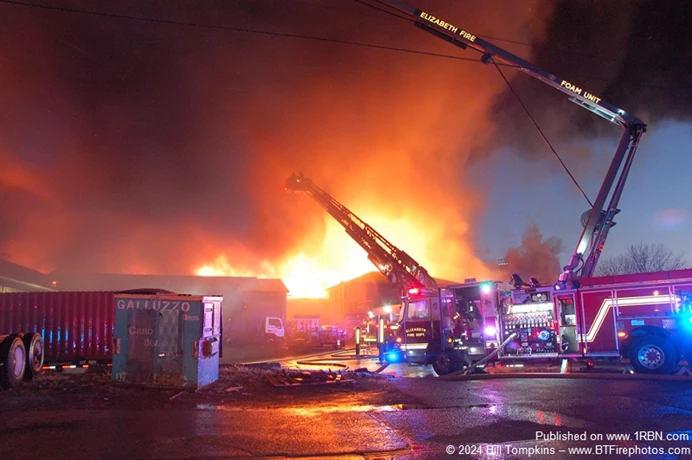
Photo by Bill Tompkins – www.BTFirephotos.com
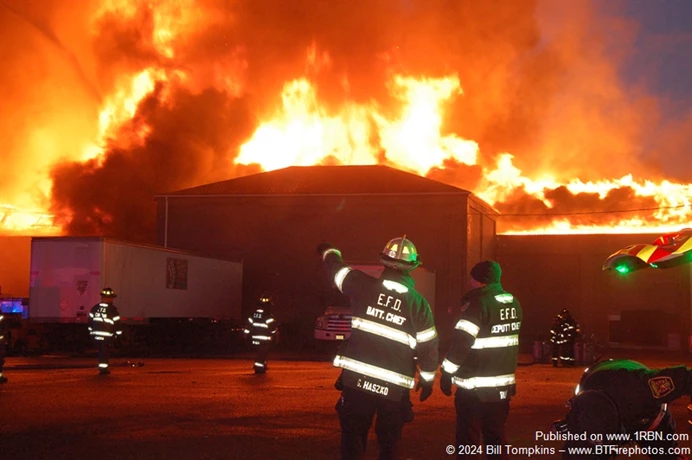
Photo by Bill Tompkins – www.BTFirephotos.com
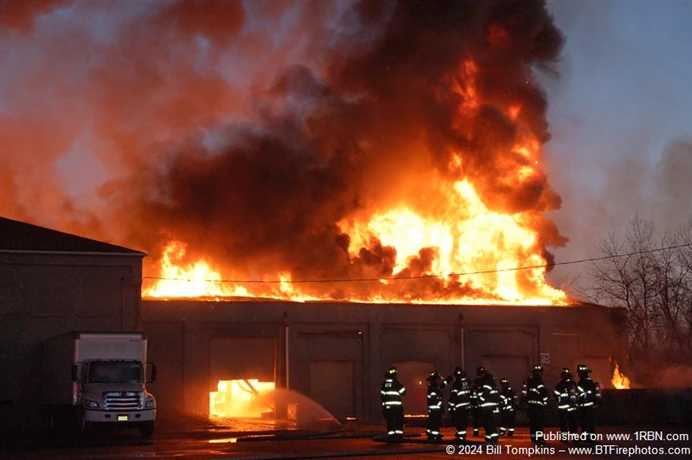
Photo by Bill Tompkins – www.BTFirephotos.com
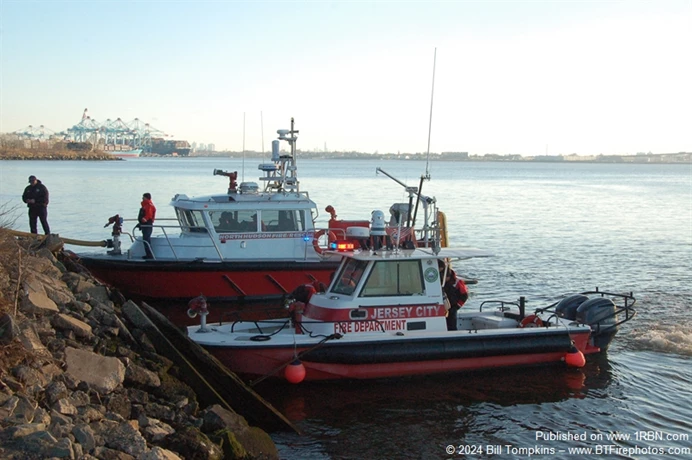
Photo by Bill Tompkins – www.BTFirephotos.com
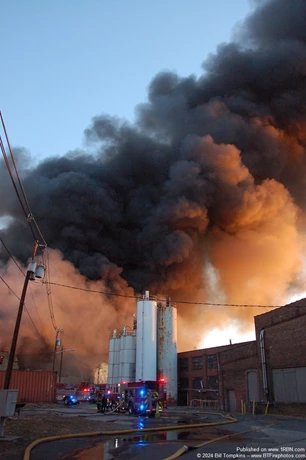
Photo by Bill Tompkins – www.BTFirephotos.com
ELIZABETH, NJ - Flames struck at least three industrial buildings in the former Singer Sewing Machine manufacturing complex in Elizabeth on the morning of January 5th, sending a column of smoke that could be seen for dozens of miles.
The main factory, built in 1863, was at the time the world’s largest manufacturing plant. Many additional buildings were added over time. Eventually, Singer moved out and many smaller businesses moved in. The closeness of the structures to one another would prove a challenge to firefighters, as well as access was not available on all sides due to the complex being on the banks of the Arthur Kill.
At 5:38 A.M., a passerby reported a fire at 107 Trumbull St. Companies responded from the firehouse only blocks away and quickly realized they had a major job. Battalion 2 arrived and transmitted a second-alarm on arrival for fire in several buildings in the rear of the complex. A third-alarm was called for within minutes as engines were finding multiple dead hydrants. Arriving companies were ordered to immediately go to master stream operations. Long stretches were required, including an inline pump operation on one supply line. The New Jersey Regional Fire Boat Task Force was activated, bringing boats from Jersey City, North Hudson Regional Fire and Rescue, Carteret and Newark for water supply to feed Elizabeth engine companies.
A strong wind and the cold temperatures worked against the crews. The goal was to halt the spread of the flames. A fourth-alarm was transmitted as the threat of extension to more of the complex remained high. Eventually, four elevated master streams, multiple ground monitors and handlines were put in operation. FDNY Marine 9 (The Firefighter), the smaller Marine 6 (William Feehan) and the Marine Battalion on M-8 were requested. The water level was too low to allow the larger boat to get close to land. The Neptune System was also called in from IMTT in Bayonne and was put into service around 12:00. Over 1200-feet of 12-inch hose was laid. As much of the contents of the involved structures was consumed, the intensity of the flames decreased, but the heavy smoke condition persisted. At about 10:00 A.M., a fifth-alarm was sounded as many of the firefighters had been working for almost five hours.
Companies were able to halt the fire spread and the smoke condition changed from a deep black to a lighter grey. The Elizabeth Police Drone Unit assisted by being able to view parts of the complex that were not accessible to firefighters. A large EMS response proved not necessary, as the only reported injury was due to a fall on the ice. Haz-Mat crews were on scene and monitored air quality and found no dangers. By midnight, most of the companies were released. The Neptune System stayed in service until about noon on Saturday, reporting over three-million gallons flowed. Several units remained on scene for an extended time hitting hot spots. The cause is being investigated.








